The National Aquarium Welcomes Newest Resident, Green Sea Turtle Kai, to Animal Care and Rescue Center
Kai arrives at the National Aquarium
The National Aquarium is excited to announce the arrival of juvenile green sea turtle Kai at its Animal Care and Rescue Center for extended rehabilitation. After a boat strike left Kai stranded on a nearby barrier island in 2018, the South Carolina Aquarium rescued and began the initial rehab process. The experts at the South Carolina Aquarium got to work treating Kai’s initial medical issues, and although the shell injury healed well, it quickly became apparent the young turtle was having issues with buoyancy control. In other words, Kai was unable to dive.
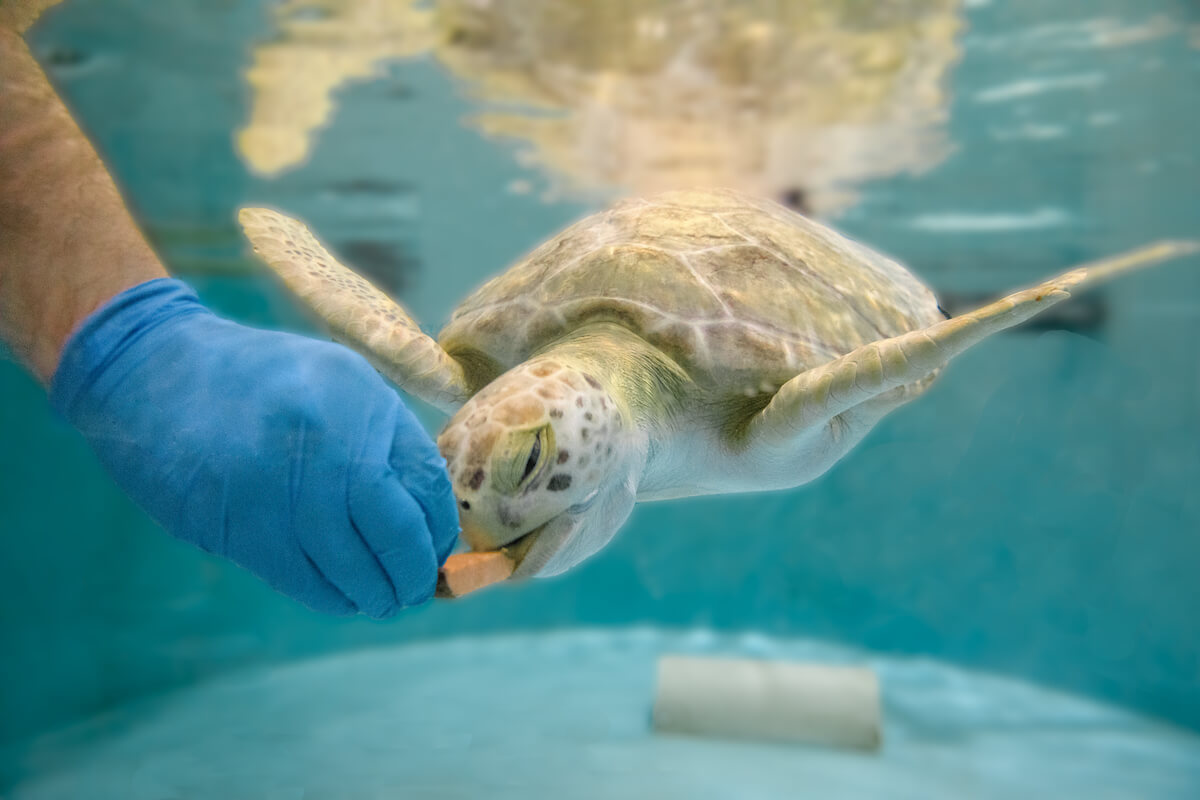
Green Sea Turtle Kai | ACRC | January 14, 2021
Courtesy of the National Aquarium Photographer, Theresa Keil
Kai can’t dive
The boat strike damaged part of Kai’s spinal cord that affects digestion, creating blockages in the gastrointestinal tract that lead to excess gas—and this excess gas causes Kai to be overly buoyant, interfering with her ability to dive. Kai also received groundbreaking treatments including stem cells. However, Kai’s injuries remained, and the National Oceanic and Atmospheric Administration eventually deemed Kai non-releasable due to the inability to dive/forage for food.
Kai began to outgrow the space at the South Carolina Aquarium and caretakers began to search for a new home. The National Aquarium quickly became a top choice with the extensive resources in place to continue Kai’s rehab and a habitat large enough that could support Kai for the rest of her life.
Through the National Aquarium’s partnership with South Carolina, Kai was safely transferred in October 2020. Since Kai’s arrival at the National Aquarium’s Animal Care and Rescue Center, it has truly been a cross-departmental effort to support Kai’s rehabilitation journey.
“It has been an absolute pleasure leading Kai’s husbandry effort at the Animal Care and Rescue Center,” said Ryan Kuenzel, herpetologist at the National Aquarium. “It’s been exciting working with the Animal Health and exhibit fabrication teams—and the rest of the husbandry staff—to find a solution to Kai’s buoyancy issue.”
The team’s work is focused on making observations in order to determine a pattern of gastrointestinal issues. Oftentimes, Kai will be pulled for a radiograph, which gives the team a quick answer as to where the gas is located in Kai’s system and what the next steps should be—readjusting the weights attached to her shell, for example.
Kai gets a weight belt – of sorts
These weights are affixed to Kai’s shell with a turtle-friendly epoxy adhesive, and readjusting them is a constantly evolving process that involves staff from the Aquarium’s Exhibit Fabrication and Animal Care and Welfare teams working together to determine where these weights need to be placed, and how heavy they should be.
“The National Aquarium has always had an intense focus on the accurate replication of the natural environment,” explained, Adam Nelson, habitat production lead at the National Aquarium. “There are other approaches that we could’ve taken where the prosthetic would’ve been more obvious, but the goal is recreating the way a turtle should look and working backwards from there.”
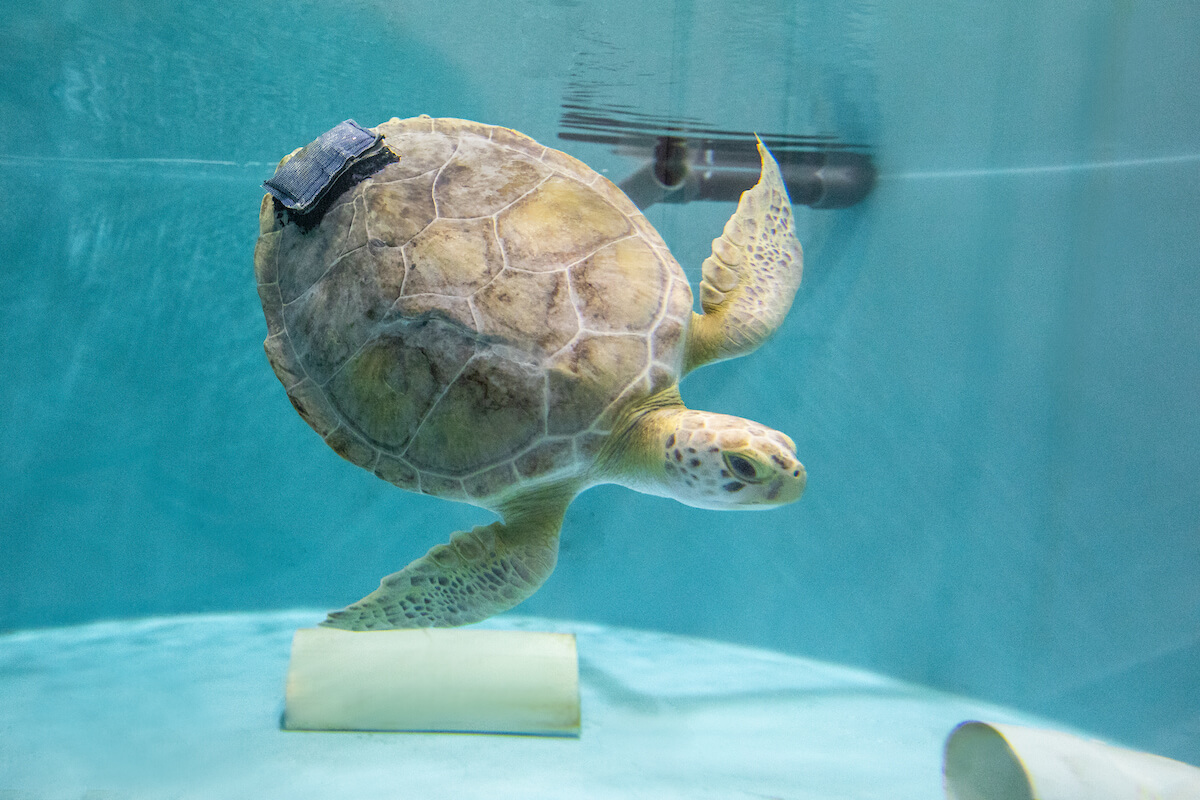
Green Sea Turtle Kai | ACRC | January 14, 2021, Courtesy of the National Aquarium Photographer, Theresa Keil
National Aquarium Leads the Way
As far as the National Aquarium knows, this shell attachment prosthetic will be the first of its kind, and the staff looks forward to sharing this innovative solution with other aquariums and rescue organizations that have sea turtles with similar issues in their care.
Kai will spread awareness on threats to green sea turtles
Kai will serve as an ambassador for green sea turtles everywhere and help to spread awareness about the threats they face. Green sea turtle populations are in decline around the world, and in the United States, certain populations are threatened or endangered.
At all stages of life, green sea turtles face threats from natural predators, but the biggest threat by far is posed by humans—many turtles are killed unintentionally as bycatch, or die after becoming entangled in discarded fishing gear or ingesting plastic pollution. In many parts of their range, green sea turtles’ nesting habitats have been destroyed or altered by coastal development.
Info on the National Aquarium
The National Aquarium is a nonprofit organization focused on changing the way humanity cares for our ocean planet. Through unparalleled exhibits, science-based education programs and hands-on field initiatives, we are creating a new community of hopeful conservationists, driven by our mission to inspire conservation of the world’s aquatic treasures. For more information on the National Aquarium, visit www.aqua.org.

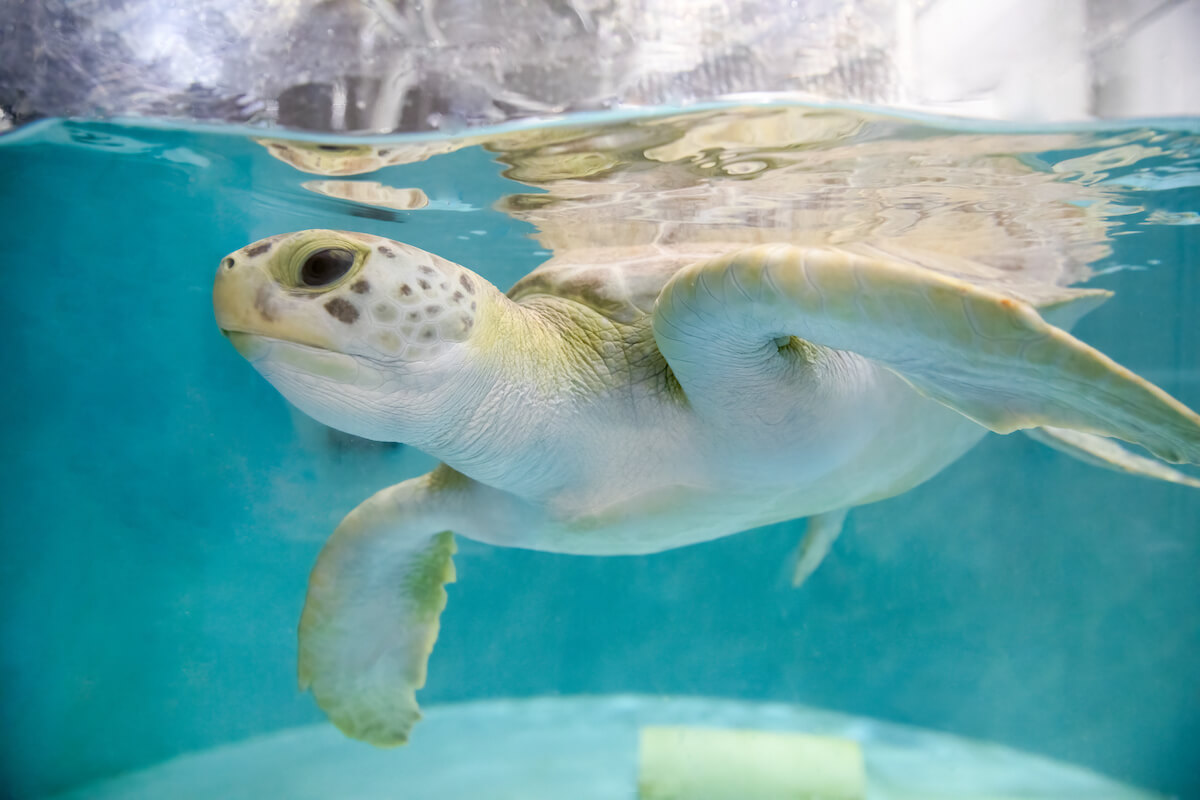
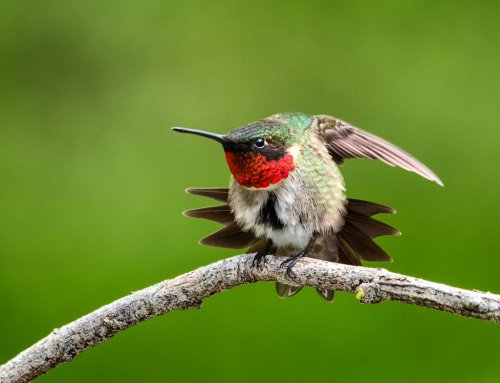
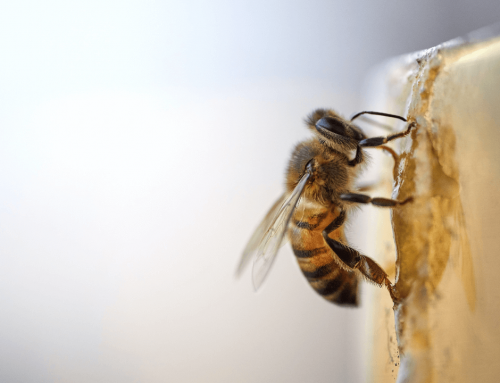
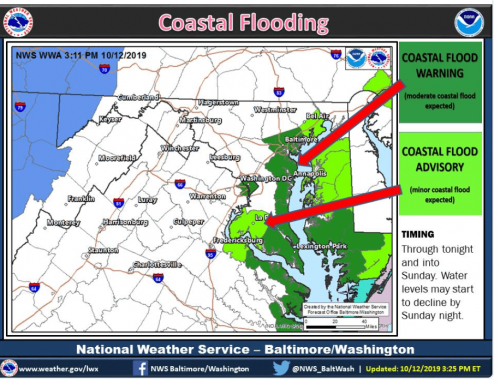
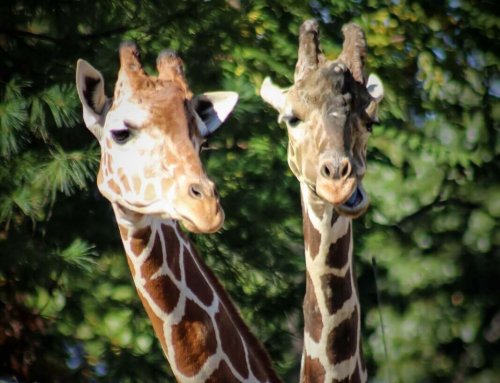
Leave A Comment